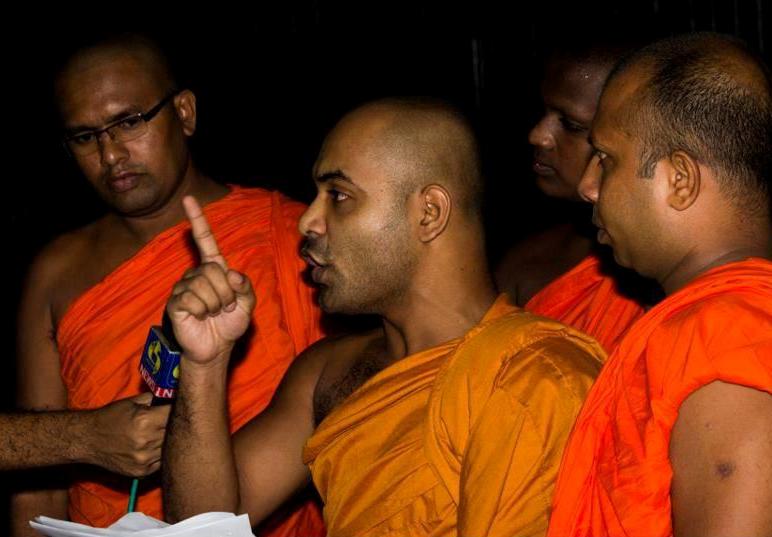Deviation Of Buddhist Philosophy In Sri Lanka
By Ayathuray Rajasingam -June 2, 2014
 Buddhism was established around 500 BC. The ultimate goal of Buddhism is to overcome conflict in the consciousness of the individual. Buddhist teachings maintain that under any circumstances (whether it be political, religious, cultural or ethnic) violence cannot be accepted in solving disputes. It asserts that violence is a perversion of Buddhism and a rejection of Buddhist heritage. As such it has become a questionable issue whether the conduct of the political leaders, religious extremists or the Military Forces had profound effect on the spiritual progress and culture of the Buddhist Sinhalese.
Buddhism was established around 500 BC. The ultimate goal of Buddhism is to overcome conflict in the consciousness of the individual. Buddhist teachings maintain that under any circumstances (whether it be political, religious, cultural or ethnic) violence cannot be accepted in solving disputes. It asserts that violence is a perversion of Buddhism and a rejection of Buddhist heritage. As such it has become a questionable issue whether the conduct of the political leaders, religious extremists or the Military Forces had profound effect on the spiritual progress and culture of the Buddhist Sinhalese.
Even the most respected Maha Sangha at Kandy are unable to condemn the activities of the BBS and the Military forces.
It is during the period of King Devanampiya Tissa, Sri Lanka saw the introduction of Buddhism. King Devanampiya Tissa laid aside his bow and arrow when Arahat Mahinda said that ‘we are the disciples of the Lord of Dhamma. In compassion towards you, we have come here from India’. Prior to the arrival of Vijaya, Nagas and Yakkas were inhabitants in Sri Lanka who are said to have been considered as aborigines. The origins of Nagas can be traced through the great epic Maha Bharath where there is reference about Arjuna’s pilgrimage to Keerimalai in Sri Lanka and worshipped at Naguleswaram. Further, Maha Bharath mentions that Nagas were a civilized people living in Central India and Sri Lanka while Mahavamsa mentions that both Nagas and Yakkas were Hindus. It is after the meeting of Arahat Mahinda, King Devanampiyatissa and his subjects embraced Buddhism because of its noble path, though the Nagas worshipped serpants signalling the presence of the worship of Lord Shiva, while the Yakkas were described as devil worshippers. Read More

